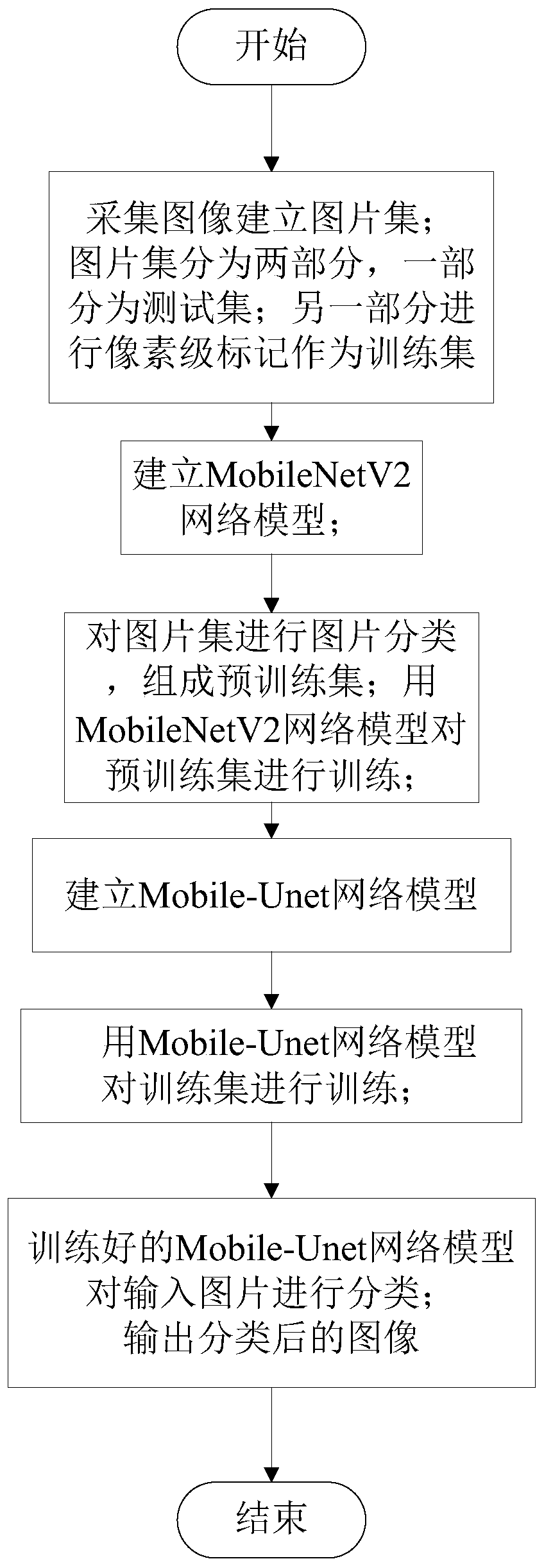Fabric defect pixel-level classification method based on deep learning
A defect pixel and deep learning technology, applied in the field of fabric defect pixel-level classification based on deep learning, can solve the problems of poor detection effect of complex textured fabrics, difficulty in meeting real-time performance, and poor accuracy, and achieve fast calculation speed and model The effect of small parameters and small amount of calculation
- Summary
- Abstract
- Description
- Claims
- Application Information
AI Technical Summary
Problems solved by technology
Method used
Image
Examples
Embodiment 1
[0074] Perform step 1, using the FID data set as the picture set;
[0075] Perform steps 2 to 5 to obtain a trained Mobile-Unet network model;
[0076] Perform step 6, select a picture from the test set as the input picture, the input picture is as follows Figure 7 shown; use the Mobile-Unet network model trained in step 5 to classify the input image, and output the classified image, such as Figure 8 shown.
Embodiment 2
[0078] Perform step 1, using the FID data set as the picture set;
[0079] Perform steps 2 to 5 to obtain a trained Mobile-Unet network model;
[0080] Perform step 6, select a picture from the test set as the input picture, the input picture is as follows Figure 9 shown; use the Mobile-Unet network model trained in step 5 to classify the input image, and output the classified image, such as Figure 10 shown.
Embodiment 3
[0082] Perform step 1, using the FID data set as the picture set;
[0083] Perform steps 2 to 5 to obtain a trained Mobile-Unet network model;
[0084] Perform step 6, select a picture from the test set as the input picture, the input picture is as follows Figure 11 shown; use the Mobile-Unet network model trained in step 5 to classify the input image, and output the classified image, such as Figure 12 shown.
PUM
 Login to View More
Login to View More Abstract
Description
Claims
Application Information
 Login to View More
Login to View More - R&D
- Intellectual Property
- Life Sciences
- Materials
- Tech Scout
- Unparalleled Data Quality
- Higher Quality Content
- 60% Fewer Hallucinations
Browse by: Latest US Patents, China's latest patents, Technical Efficacy Thesaurus, Application Domain, Technology Topic, Popular Technical Reports.
© 2025 PatSnap. All rights reserved.Legal|Privacy policy|Modern Slavery Act Transparency Statement|Sitemap|About US| Contact US: help@patsnap.com



